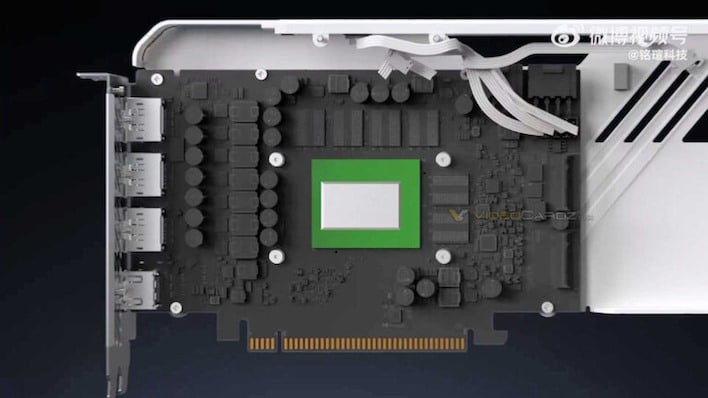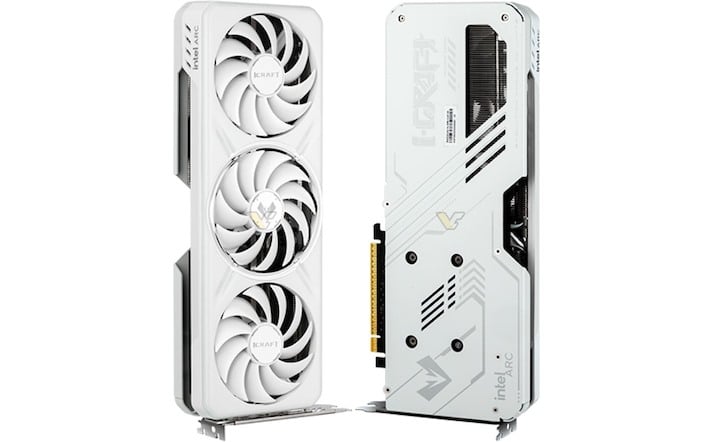Intel Arc B580 Battlemage Graphics Card Spotted With Dual M.2 SSD Slots
What to do with the extra lanes? If you're Chinese hardware vendor MaxSun, you wire them up to M.2 sockets on the graphics card itself. This isn't actually the first time we've seen this idea; ASUS stuck an M.2 socket on a GeForce RTX 4060 Ti card, which similarly uses just eight PCIe lanes. It is the first time we've seen dual slots, though, and also the first time that the GPU-mounted SSD sockets had their own heatsink.
There's unfortunately little information available on the web about this unique design. However, we can still dispel a few misconceptions people are likely to have. For one thing, the SSDs installed on this card will not be connected to the GPU, but instead to the CPU, like other PCIe devices. They will be wired directly to the PCI Express slot, just like the GPU die itself. They will likely share power circuitry, but that's all.
PCIe bifurcation isn't completely unknown on consumer boards, but it's typically present to support additional PCIe or storage slots elsewhere on the motherboard. Dividing up the x16 slot into multiple separate interfaces this way is only ever really done to support M.2 carrier cards with up to four slots on board. It's possible a mode like that could work for this card, but it would likely limit the GPU to an x4 interface, which isn't the end of the world, but certainly not optimal either.
Still, a solution like this, if supported, could be a great way for users to hook up PCIe 5.0 SSDs to motherboards that only only have PCIe 5.0 on the primary x16 slot. These SSDs would likely have better cooling than most M.2 drives installed into a motherboard, too. We're very curious to see if MaxSun releases official details of this model, because we weren't able to find it anywhere on the company's sites or social media. Thanks to Videocardz for bringing the unique GPU to our attention.



